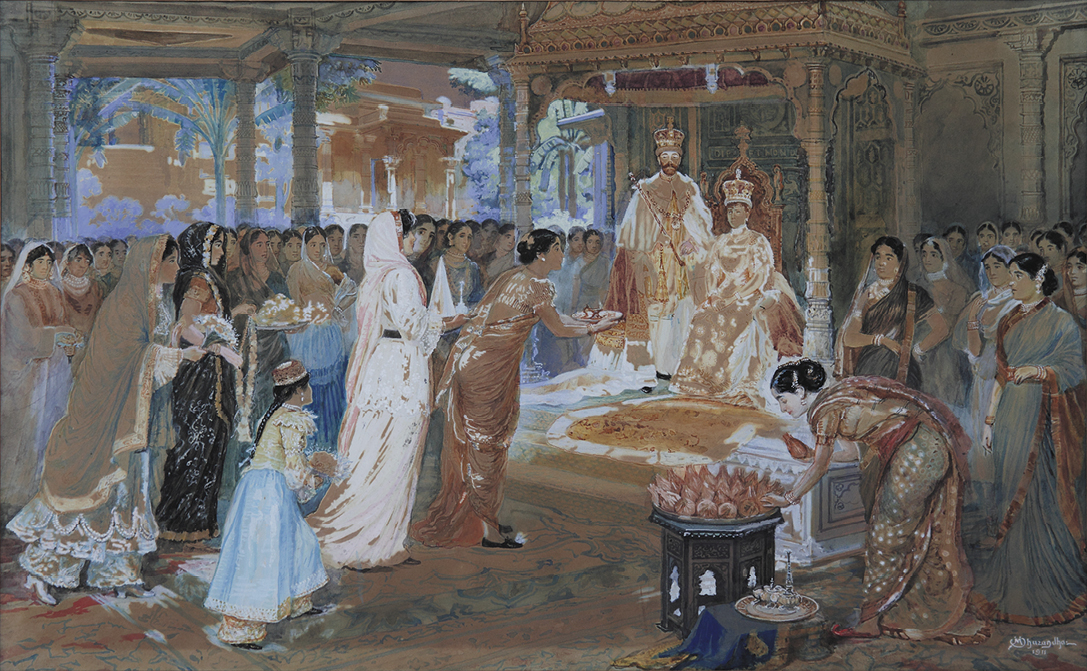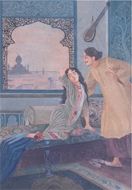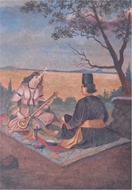![]() Fine Art, Design & Lifestyle
Fine Art, Design & Lifestyle
![]() Fine Art, Design & Lifestyle
MAHADEV VISHWANATH DHURANDHAR (1867 - 1944)
Fine Art, Design & Lifestyle
MAHADEV VISHWANATH DHURANDHAR (1867 - 1944)
RELATED LOTS
CONTACT US
Catalogue & Viewing
Lot Closed
Accounts & Shipping
Lot Closed
-
Provenance
 Provenance
Provenance
Private Collection, Mumbai
-
Literature
 Literature
Literature

Mahadev Vishwanath Dhurandhar was born on March 18, 1867 in Kolhapur. He began his art training tutored by the famous painter Abalal Rahiman and later joined the Sir J J School of Art to study painting. Later at this institute he was invited to join as a teacher, then appointed Principal and eventually went on to become the first-ever Indian Director of the Sir J J School of Art.
Like all his contemporaries he was exposed to the works of the European and British artists and fascinated by their style began emulating the European Academic Art form. Dhurandhar’s early work was a reflection of this fascination. So good was he that whilst still a student, he won several awards. Later during his life-time he was recipient of many more medals and honours including the title of Rao Bahadur awarded to him by the British government.
Early in his career, Dhurandhar rode the crest of the art scene in Mumbai and through his solo exhibitions as well as group shows, his works became very popular. He was amongst the first to hold a solo exhibition of his paintings. Mahadev Vishwanath Dhurandhar died in Mumbai in 1944.
Many of his paintings lie in major collections; one of his works still hangs at the Buckingham Palace, and another is in the South Kensington Museum, London. Several royal family palaces and maharaja retreats across India still own several of his works. Otto Rothfield’s book Women of India, published in Mumbai (Bombay) by D. B. Taraporevala has many of his watercolours and gouache works turned into lithographic prints as illustrations, some of which date to the early 1900s.
The Coronation is a delightful work that represents Dhurandhar’s unique documentary style. In classical flair he captures traditions and customs with a unique sensitivity. Here women of various ethnicities line up to pay obeisance to the Queen in 1911 at the time of the all India durbar. The platter of coconuts, the incense to anoint oneself as a welcoming gesture etc all relate very well to the occasion. Dhurandhar’s most remarkable skill was his ability to convey the personalities of his characters and drama of the situation, making it all very memorable. Though the work is densely peopled, his attention to detail, capturing the features and dress particulars of the attending women is very fascinating.
That he was captivated with Raja Ravi Varma’s paintings and influenced by him is very apparent (Raja Ravi Varma was popular for his mythological paintings and is one of India’s most iconic artists to date). Dhurandhar, a known religious minded person, began painting images of Gods and Goddesses and historical paintings. But with these he also painted subjects like current happenings in society, the people around him and their way of life including the rituals and festivals they celebrated. Many of his detailed watercolours illustrate the weddings and other happenings in the Pathare Prabhu society to which Dhurandhar belonged. He worked effortlessly in many genres like landscapes, illustrations, posters, craft oriented paintings or designs, including paintings for educational aid.



